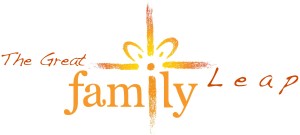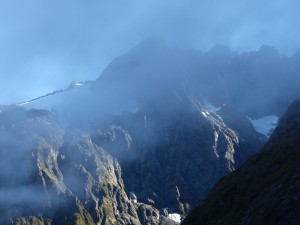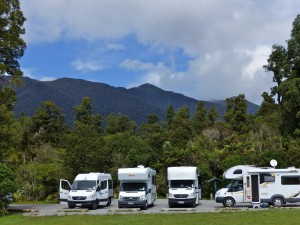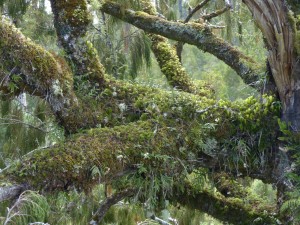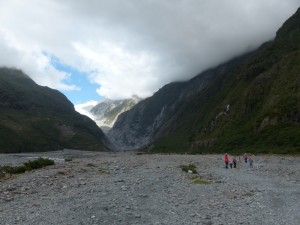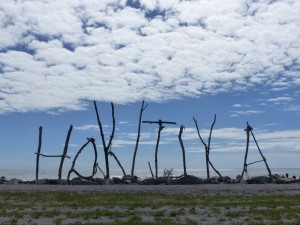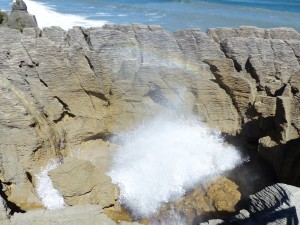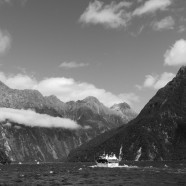
The west coast of New Zealand was important for the Maori’s as it contained the precious green gemstone jade, that they used for decoration, as a symbol of wealth and because of its strength, as knife or axe. But when the early European settlers discovered gold in the 1860’s, this area became booming and small towns with many pubs were quickly established. The gold rush only lasted for a few years and nowadays the area is most famous for its raw and unspoiled nature and you see more campervans and tourist busses than normal traffic on the roads.
We have been traveling along the west coast from South to North over the past week and we really enjoyed the scenery. On most days the views along the route were as great as the destination. The humid air from the Tasman sea hits the Southern Alps and therefore this area has a very high annual rainfall (some places 7 metres per year, more than double the rainfall in the Amazon area). And because of this you get a mixture of mountains, falls, rivers, rainforest and stunning coastlines. This is an area where you need to take time and stop often to take pictures.
We started in Manapouri where we stayed for three nights. This area is called Fiordlands; to correct a mistake the early surveyors made, who called the large bays here sounds, which are actual fjords. There are numerous sounds here but the most accessible is the Milford sound, which we choose to visit. You can camp at the entrance of Milford sound, but we were advised not to do this as there are many sand flies there. These are very nasty flies, who make bites that itch for over a week. We had experienced them before at another spot, so we decided to stay a bit further away. The road to the sound is beautiful and for three hours you see waterfalls, lakes, mountain views, a 1200 meter one way tunnel and rainforest. At the sound we took a three hour boat trip, so we had plenty of time to sail to the Tasman sea and back and also visit the underwater observatory. This is a 10 meter subsea structure where you can see the underwater world. Like a gigantic aquarium. We had hoped to spot dolphins or penguins in the sound, but we only found seals. But the scenery is so great that we did not miss the wildlife. It is difficult to describe, but hopefully the pictures will give an impression of how magical this place is.
From Manapouri we drove towards Queenstown where we had a picnic on the lake shore. Queenstown is popular with young backpackers who come for the adrenaline rush of power boating, rafting and other extreme outdoors. Not our style, so we camped nearby in Arrowtown an old city from the golden age, with many old buildings still intact. From there we drove to Wanaka for something completely different. We visited Puzzling world. With six illusion rooms, weird buildings, mind boggling puzzles and a large maze. This was a great stop for both young and old.
From Wanaka we drove via the Haast pass back to the coast, probably the best route we drove this trip. Even on a rainy day the views are spectacular and the scenery stunning. Our next stop was the Franz Josef glacier. There are two major glaciers here, Fox and Franz Josef and what makes them special is the fact that they come very close to sea level. So they can easily be seen and you can walk from the rainforest to the glacier mouth over the old glacier river. A nice walk that took us about three hours. Even our little one walked most of the route by herself.
From the glaciers we travelled further north to Westport where we are camping right now. On route we made a stop in Hokitika to visit the treetop walk to see the rainforest from a different angle and to search for jade at the beach. Obviously we also made a stop at the famous pancake rocks at Punakaiki. A bizarre formation of layered rocks, where at high tide you can see water spray blowing into the air. From Westport we will travel slowly back to the north east side of the island. But that is a story for next time.
